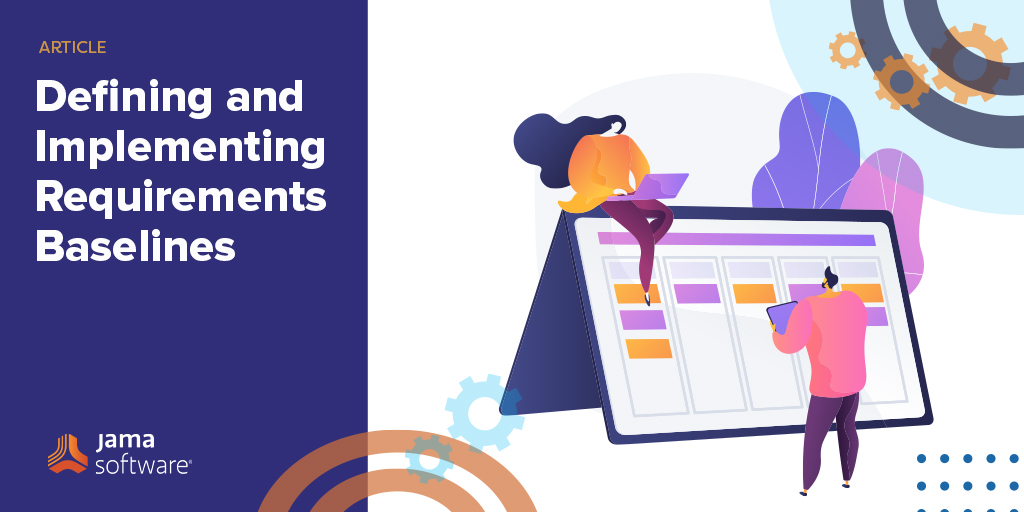
How can you distinguish excellent software requirements and software requirements specifications (SRS) from those that could cause problems? In this post, we’ll start by discussing several different characteristics that individual requirements should exhibit. Then, we’ll then look at the desirable traits a successful SRS should have as a whole.
Characteristics of Effective Requirements
In an ideal world, every individual user, business, and functional requirement would exhibit the qualities described in the following sections.
Complete
Each requirement must fully describe the functionality to be delivered. It must contain all the information necessary for the developer to design and implement that bit of functionality. If you know you’re lacking certain information, use TBD (to be determined) as a standard flag to highlight these gaps. Resolve all TBDs in each portion of the requirements before you proceed with construction of that portion.
Nothing says you need to make the entire requirements set complete before construction begins. In most cases, you’ll never achieve that goal. However, projects using iterative or incremental development life cycles should have a complete set of requirements for each iteration.
Using minimal requirements specifications runs the risk of having different people fill in the blanks in different ways, based on different assumptions and decisions. Keep requirements details verbal instead of written also makes it hard for business analysts, developers, and testers to share a common understanding of the requirements set.
RELATED: Move to Jama Connect® — A Modern Requirements Management Alternative to IBM® DOORS®
Correct
Each requirement must accurately describe the functionality to be built.
The reference for correctness is the source of the requirement, such as an actual user or a high-level system requirement. A software requirement that conflicts with its parent system requirement is not correct.
Only user representatives can determine the correctness of user requirements (such as use cases), which is why users or their close surrogates must review the requirements.
Feasible
It must be possible to implement each requirement within the known capabilities and limitations of the system and its operating environment. To avoid specifying unattainable requirements, have a developer work with marketing or the BA throughout the elicitation process.
The developer can provide a reality check on what can and cannot be done technically and what can be done only at excessive cost. Incremental development approaches and proof-of-concept prototypes are ways to evaluate requirement feasibility.
Necessary
Each requirement should document a capability that the stakeholders really need or one that’s required for conformance to an external system requirement or a standard.
Every requirement should originate from a source that has the authority to specify requirements. Trace each requirement back to specific voice-of-the-customer input, such as a use case, a business rule, or some other origin of value.
RELATED: Carnegie Mellon University Software Engineering Program Teaches Modern Software Engineering Using Jama Connect
Prioritized
Assign an implementation priority to each functional requirement, feature, use case, or user story to indicate how essential it is to a particular product release.
If all the requirements are considered equally important, it’s hard for the project manager to respond to budget cuts, schedule overruns, personnel losses, or new requirements added during development. Prioritization is an essential key to successful iterative development.
Unambiguous
All readers of a requirement statement should arrive at a single, consistent interpretation of it, but natural language is highly prone to ambiguity. Write requirements in simple, concise, straightforward language appropriate to the user domain. “Comprehensible” is a requirement quality goal related to “unambiguous”: readers must be able to understand what each requirement is saying. Define all specialized terms and those that might confuse readers in a glossary.
Verifiable
See whether you can devise a few tests or use other verification approaches, such as inspection or demonstration, to determine whether the product properly implements each requirement.
If a requirement isn’t verifiable, determining whether it was correctly implemented becomes a matter of opinion, not objective analysis. Requirements that are incomplete, inconsistent, infeasible, or ambiguous are also unverifiable.
Characteristics of Effective Software Requirements Specifications (SRS)
It’s not enough to have excellent individual requirement statements. Sets of requirements that are collected into a software requirements specification (SRS) ought to exhibit the characteristics described in the following sections.
Complete
No requirements or necessary information should be absent. Missing requirements are hard to spot because they aren’t there! Focusing on user tasks, rather than on system functions, can help you to prevent incompleteness. I don’t know of any way to be absolutely certain that you haven’t missed a requirement. There’s a chapter of my book “Software Requirements, Third Edition” that offers some suggestions about how to see if you’ve overlooked something important.
WRITE BETTER REQUIREMENTS: Jama Connect® Features in Five: Jama Connect Advisor™
Consistent
Consistent software requirements don’t conflict with other requirements of the same type or with higher-level business, system, or user requirements. Disagreements between requirements must be resolved before development can proceed. If you spot a pair of conflicting requirements, you might not know which one (if either) is correct until you do some research. Recording the originator of each requirement lets you know who to talk to if you discover conflicts in your software requirements specification.
Modifiable
You must be able to revise the SRS when necessary and maintain a history of changes made to each requirement. This dictates that each requirement be uniquely labeled and expressed separately from other requirements so that you can refer to it unambiguously.
Each requirement should appear only once in the SRS. It’s easy to generate inconsistencies by changing only one instance of a duplicated requirement. Consider cross-referencing subsequent instances back to the original statement instead of duplicating the requirement. A table of contents and an index will make the SRS easier to modify. Storing requirements in a database or a commercial requirements management solution makes them into reusable objects.
Traceable
A traceable requirement can be linked backwards to its origin and forward to the design elements and source code that implement it and to the test cases that verify the implementation as correct. Traceable requirements are uniquely labeled with persistent identifiers. They are written in a structured, fine-grained way as opposed to crafting long narrative paragraphs. Avoid lumping multiple requirements together into a single statement; the individual requirements might trace to different design and code elements.
How Do You Know If Your Requirements and SRS Exhibit These Attributes?
The best way to tell whether your requirements have these desired attributes is to have several project stakeholders carefully review the SRS. Different stakeholders will spot different kinds of problems. For example, analysts and developers can’t accurately judge completeness or correctness, whereas users can’t assess technical feasibility.
You’ll never create an SRS in which all requirements demonstrate all these ideal attributes. However, if you keep these characteristics in mind while you write and review the requirements, you will produce better requirements documents and you will build better products.
To learn more about how to write requirements in a way that all stakeholders have a clear understanding of development needs,
visit The Essential Guide to Requirements Management and Traceability
Jama Software has partnered with Karl Wiegers to share licensed content from his books and articles. Karl Wiegers is an independent consultant and not an employee of Jama Software. He can be reached at ProcessImpact.com.





 The sample on the left has deep indentation representing branching and loops. The sample on the right has several short methods with little indentation, and is less complicated to understand and to modify. When looking for complexity, look for long classes and methods and deep levels of indentation. It’s simple, but it’s a proven marker of complexity.
The sample on the left has deep indentation representing branching and loops. The sample on the right has several short methods with little indentation, and is less complicated to understand and to modify. When looking for complexity, look for long classes and methods and deep levels of indentation. It’s simple, but it’s a proven marker of complexity.




